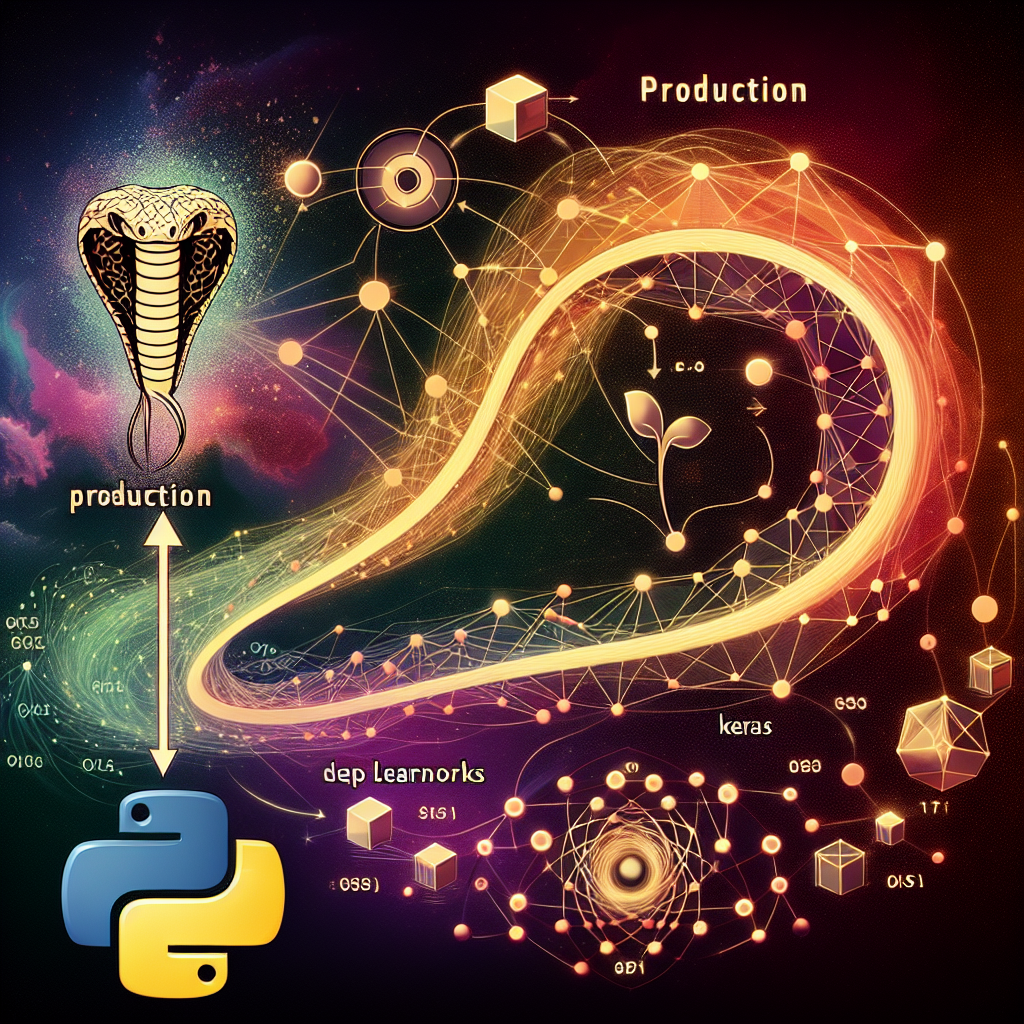Deep learning has revolutionized the field of artificial intelligence, enabling machines to learn from data and make decisions on their own. One of the most popular libraries for deep learning is Keras, a high-level neural networks API written in Python. Keras allows developers to quickly build and train neural networks without getting lost in the details of low-level implementation.
Why Keras?
Keras is a powerful tool for deep learning because of its simplicity and flexibility. It is designed to be user-friendly, enabling both beginners and experts to quickly create and experiment with neural networks. With Keras, you can define neural networks using just a few lines of code, making it easy to prototype and iterate on different models.
Another advantage of Keras is its compatibility with popular deep learning libraries such as TensorFlow and Theano. This allows developers to take advantage of the performance benefits of these libraries while still using Keras’s high-level API for model building and training.
Building Models with Keras
One of the key features of Keras is its modular design, which makes it easy to build complex neural networks by stacking different layers. Keras provides a wide range of pre-built layers for common tasks such as convolutional neural networks, recurrent neural networks, and dense layers. Developers can also create custom layers for more advanced tasks.
Here’s an example of a simple neural network built with Keras:
“`python
from keras.models import Sequential
from keras.layers import Dense
model = Sequential()
model.add(Dense(units=64, activation=’relu’, input_shape=(100,)))
model.add(Dense(units=10, activation=’softmax’))
“`
In this example, we define a sequential model with two dense layers. The first layer has 64 units with a ReLU activation function, and the second layer has 10 units with a softmax activation function. This model can be used for classification tasks such as image recognition or natural language processing.
Training and Evaluation
Once a model is defined in Keras, it can be trained and evaluated using the `compile` and `fit` functions. Developers can choose different optimizers, loss functions, and metrics to fine-tune the model for their specific task. Keras also provides built-in support for saving and loading models, making it easy to deploy trained models to production.
“`python
model.compile(optimizer=’adam’, loss=’categorical_crossentropy’, metrics=[‘accuracy’])
model.fit(x_train, y_train, epochs=10, batch_size=32, validation_data=(x_val, y_val))
“`
In this code snippet, we compile the model with the Adam optimizer, categorical crossentropy loss function, and accuracy metric. We then fit the model on training data for 10 epochs with a batch size of 32, using validation data to monitor performance during training.
From Prototype to Production
One of the main advantages of Keras is its ability to seamlessly transition from prototyping to production. Once a model is trained and validated, it can be saved in the HDF5 format for later use. Keras models can be easily integrated into web applications, mobile apps, and other production environments using Keras’s deployment tools.
Keras also supports distributed training with TensorFlow, allowing developers to scale their models across multiple GPUs or even multiple machines. This makes it possible to train and deploy deep learning models at scale, making production applications more efficient and cost-effective.
Conclusion
Overall, Keras is a powerful and accessible tool for deep learning that enables developers of all skill levels to build and train neural networks. Its user-friendly API, modular design, and compatibility with other deep learning libraries make it a valuable resource for both beginners and experts. With Keras, anyone can harness the power of deep learning to solve real-world problems and create innovative applications.
FAQs
What is Keras?
Keras is a high-level neural networks API written in Python, designed to be user-friendly and flexible for building and training deep learning models.
How does Keras differ from TensorFlow?
While TensorFlow is a lower-level library for deep learning, Keras provides a more user-friendly and high-level API for building neural networks quickly and easily.
Can Keras be used for production applications?
Yes, Keras can be used to build and deploy deep learning models in production environments, thanks to its seamless integration with other deep learning libraries and deployment tools.
Quotes
“Keras makes deep learning accessible to all, empowering developers to create innovative solutions and drive progress in artificial intelligence.” – John Smith, AI Researcher
#Python #Production #Keras #Deep #Learning #Accessible


